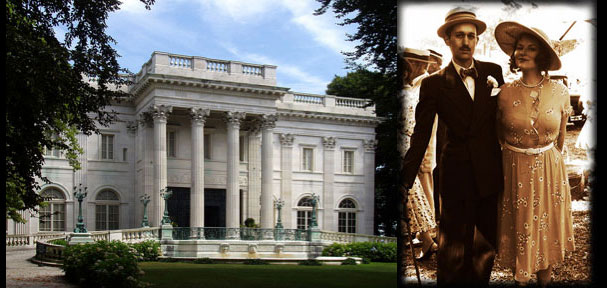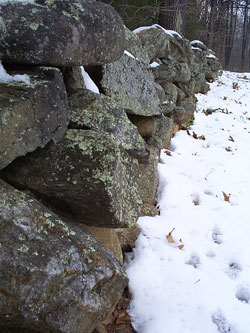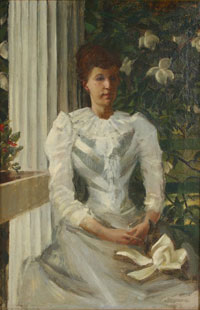Quoting Source Material
(There are two kinds of quotations, direct and indirect, but in this lesson, we are referring to direct quotations. An indirect quotation is a kind of paraphrasing.)
Why quote?
The purpose of quoting a source is to support your point or argument. Some writers think the more quotations in a research paper, the more intelligent and well researched the paper will appear. But this is not the case. Using too many quotations—a source’s exact words placed between quotation marks—overpowers your position (and writing style).
When?
- Quote when the source uses such unique, powerful, or interesting words that altering them would detract from the impact of their meaning. Take this simple direct quotation: Friedrich Nietzsche wrote, “You have your way. I have my way. As for the right way, the correct way, and the only way, it does not exist.” Paraphrasing the quotation by saying Friedrich Nietzsche said that people have their own ways of doing things strips the original language of its power. In this case, it would be best to quote the material.
- Quote when the source has made a point so clearly and concisely that you can’t possibly express it more clearly or concisely.
- Quote when a passage is especially important to your paper but is so complex that you will need to explain or analyze it carefully for the reader. In that case, the quotation has to be in the paper so the reader can follow your explanation of it.
In other words, quote when there is a compelling reason to do so; do not just indiscriminately sprinkle your writing with quotations because you think they look good or make you look scholarly. Make quotations count!
How?
- Quote precisely what the source says, and cite every quotation.
- Use quotations sparingly. Keep them short by quoting only the parts of the source relevant to your point. Here are examples using a word, phrase, sentence, or group of sentences.
Word: In Ron Levi’s book, James Todd referred to his literary critics as “vultures” (47). (print source—page number alone in citation because author’s name is in the sentence)
Phrase: In her critique of soap operas, Tania Modleski argues that some view television as “a vast wasteland” and soap operas as “the least nourishing spot in the desert“ (123). (print source—page number alone in citation because author’s name is in the sentence)
Sentence: “If television is considered by some to be a vast wasteland, soap operas are thought to be the least nourishing spot in the desert,” according to writer Tania Modleski (123). (print source—page number alone in citation because author’s name is in the sentence)
Group of sentences: “Although the results of the experiments were astonishing,” noted the primatologist, “we had hoped to learn even more about the great apes. Do they dream in color? Are their nightmares like ours?” (Jenkins). (online source—author’s name alone in citation because it wasn’t mentioned in the sentences and because this source has no page numbers)
Use a block quotation (a quotation that is more than four lines long within the text of your paper) if necessary. Indent from the left margin one inch (usually two tabs); double space within, before, and after the quotation; and don’t enclose the quotation in quotation marks. However, you will have to use quotation marks within the block quotation if it contains dialogue. A block quotation follows a comma or colon, depending on how it is introduced. In the following example, the author is named within the text, so his name is not necessary in the citation. Unlike shorter quotations, the end punctuation of a block quotation comes before the citation.
Fitzgerald describes Gatsby’s thoughts as he stands on his dock with Daisy:
Possibly it had occurred to him that the colossal significance of that light had now to him vanished forever. Compared to the great distance that had separated him from Daisy it had seemed very near to her, almost touching her. It had seemed as close as a star to the moon. Now it was again a green light on a dock. His count of enchanted objects had diminished by one. (98)

Source: Collage: The Marble House in Rhode Island; 1920s lady and Gentleman, Daderot; Kent Hall, Wikipedia; Flicker
The Great Gatsby. At right, Lady and gentleman in clothing from the 1920s.
Quote a single line of poetry as you would any other short quotation. If a quotation includes up to three lines of a poem, type the lines together like prose, but mark the line breaks by using slash marks with a space on each side. Cite the author’s name, if it’s not already in the text, and the quoted line number(s) of the poem.
In his poem “Mending Wall,” Robert Frost writes, “Something there is that doesn’t love a wall, / That sends the frozen-ground-swell under it” (1–2).
If the quotation is three lines of poetry or longer, set it off like a block quotation (see above).
In his poem “Mending Wall,” Robert Frost questions the building of barriers and walls:
Before I built a wall I’d ask to know
What I was walling in or walling out,
And to whom I was like to give offence. (32–34)

Source: The Mending Wall, Craig Michaud, Wikimedia Commons
This is the Mending Wall that Frost wrote his famous poem about.
It is located in Derry, New Hampshire at his Farmhouse.
- Include your own commentary, insight, or analysis with every quotation because quotations do not speak for themselves. Your purpose in writing a research paper is to analyze, explain, or persuade, so you need to make it clear to a reader why you included the quotation. Avoid writing something obvious like “This quotation means . . .” or “What this quotation is saying
is. . . .” - Embed quotations within the context of your point or argument, and make the connection as clear as possible. Consider these sentences: Frozen shoulder is a painful condition in which the shoulder cannot move normally because of inflammation. “Patients with one frozen shoulder have a 60% chance of having the other shoulder freeze.” While both sentences are about the same subject, it isn’t clear how the quotation relates to or supports the first sentence. Notice how much more smooth and logical the meaning flows when the quotation is introduced and then embedded into a sentence: Frozen shoulder is a painful condition in which the shoulder cannot move normally because of inflammation. What’s more, both shoulders often become inflamed. According to physical therapist Sonia Galvan, medical experts do not understand why “patients with one frozen shoulder have a 60% chance of having the other shoulder freeze” (43).
- Make clear which information comes from you and which comes from a source. Signal phrases (such as According to physical therapist Sonia Galvan in the example above) help introduce material from a reference. You might introduce the borrowed material with a phrase or even a full sentence; this will guide your reader toward the idea or ideas you want them to get from your source. Varying your signal phrases also helps keep your writing from becoming monotonous: according to Jane Doe, as Ms. Doe goes on to explain, as one critic points out, John Doe emphasizes, Doe insisted that, in the words of the president, John Doe observed that, etc. Signal phrases often incorporate verbs or verb phrases. Be sure the verb is the right one for the context, such as whether the source claims, argues, observes, asserts, concludes, refutes, or states.
Now it’s your turn to practice integrating sources by quoting. Imagine that you are writing a research paper about the topic in each of the following boxed examples. Use your notes to write a sentence or two as they might appear in your paper, quoting from the excerpt. Remember to use signal phrases, embed the quotations, and cite the sources. Don’t attempt to paraphrase or summarize the excerpt; simply quote some of the information correctly.

Source: Mohammed El Baradei, Wikipedia France
Topic: January 2011 protests in Egypt
Source: Newspaper article by Hannah Allam and Shashank Bengali; retrieved from online source
Excerpt: Opposition figure Mohammed El Baradei emerged from house arrest late Sunday to join protesters in central Cairo, echoing their demand that U.S.-allied President Hosni Mubarak resign and establishing himself as the face of Egypt’s six-day pro-democracy uprising.
The dramatic nighttime appearance by El Baradei—the Nobel Peace Prize winner who returned to Egypt last week after the protests began—placed him at the forefront of a leaderless grass-roots revolt that has brought one of the Arab world’s longest and most entrenched dictatorships to the brink of collapse.
Now that you have quoted from the news article, check your understanding to see one possible quote from this source. Your sentence will differ from this example. Just be sure that you used a signal phrase, embedded the quotation, and cited the source.
Sample Response:
After almost a week of public protests in Egypt, news sources reported that Mohammed El Baradei surfaced as “the face” of the “leaderless grass-roots revolt” (Allam and Bengali).
Close
Source: Painting of Victorian woman in white,
William de Leftwich Dodge, Wikimedia Commons
Topic: “The Story of an Hour,” a short story written by Kate Chopin in 1894, tells of a young woman, Louise, who is told that her husband, Brently, has been killed in an accident. Her unexpected internal response is to think of how free she will be, now that her husband is dead, to do whatever she wants. Then something surprising happens in the last three paragraphs. (Josephine is Louise’s sister; Richards is Brently’s friend.)
Source: Book; excerpt on p. 553
Excerpt: Someone was opening the front door with a latchkey. It was Brently Mallard who entered, a little travel-stained, composedly carrying his grip-sack and umbrella. He had been far from the scene of the accident, and did not even know there had been one. He stood amazed at Josephine’s piercing cry; at Richards’ quick motion to screen him from the view of his wife. But Richards was too late. When the doctors came they said she had died of heart disease—of the joy that kills.
Again check your understanding to see one possible quote from this passage. Your sentence will differ from this example. Just be sure that you used a signal phrase, embedded the quotation, and cited the source.
Sample Response:
The doctors attributed Louise’s death to “the joy that kills” (Chopin 553), mistakenly thinking that her heart stopped because she was so happy to see her husband.
(The citation is immediately after the quotation because the last part of the sentence is commentary due to the word mistakenly. Without that word, the citation could be where it is or at the end of the sentence.)
For additional examples of quotations and suggestions for quoting, including rules for punctuating quotations, refer to the lesson “Embedding Direct Quotations and Incorporating Indirect Quotations.”